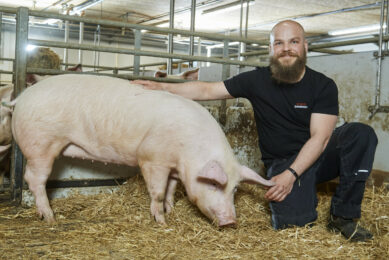Light (III): 4 proofs that correct levels are vital

In his penultimate piece about light, Pig Progress’ resident expert on ‘Pig Management’, John Gadd gathers 4 pieces of evidence from various sources to prove just how light can effect breeding sows and why it is so important to get the levels correct.
EXPERT
For the breeding sow and gilt, correct lighting levels are so important. 2 decades ago water was the ‘Forgotten Nutrient’ – since rectified. I only wish that lighting the ‘Forgotten Management Task’ was equally remedied.
But no. On so many farms – even the ‘good ones’ these days, they protest “We are lighting our pigs well.”
My reply is: “Okay – where’s your light meter?”
“We haven’t one.”
“Okay,” I reply, “How do you know if you are reaching the right levels or not?”
My point is that many pig breeders just do not realise what degree of brightness is needed, and a light meter is a vital tool to make sure that there is enough – and occasionally too much.
4 examples showing the importance of lighting
Here is the proof from several sources, highlighted in various tables. Table 1 shows overall throughput.
Table 2 deals with the question how to reduce autumn infertility.
Table 3 deals with the lighting of farrowing rooms to the latest standards for at least 16 hours per day, compared to extinguishing the main lights when staff vacate the room (50 lux). In this table, each litter had the same numbers. Two beneficial effects could be seen here. Re-breeding was smoother and either the sows let down more milk or the piglets consumed more.
Last but not least, Tables 4a and 4b show figures of the effects of providing shade in bright spring and early summer weather. It shows before-and-after results from three farms. Shade levels about 50-80 lux compared to 360-420 lux outside, and temperatures some 3˚C lower. 2 farms benefited from early summer shading, 1 did not. American results on shading their outside runs seem to give similar or better results.
Summary
- Much better awareness of correct levels of lighting is needed, even in modern pig buildings.
- This cannot be done accurately enough without the regular use of a light meter.
- Pig farmers – unlike the poultry industry who realise how important light is to birds – do not realise how bright the light needs to be in the breeding barn and in the farrowing house.
- Careful control of the lengths of light and dark periods seems to be essential.
- Manipulating light levels is one method (out of many) of lessening the effect of both the autumn and late winter/spring variants of seasonal infertility.
- Measuring light should be just in front of the sow’s eyes (common sense!) not anywhere in the building.
- Control of light for outdoor sows is understandably very difficult.
- Control for sows indoors in groups and in outside runs is much easier.
Previous articles from the series:
Light (I): Seasonal infertility
Light (II): How much and for how long?
References are available on request.











